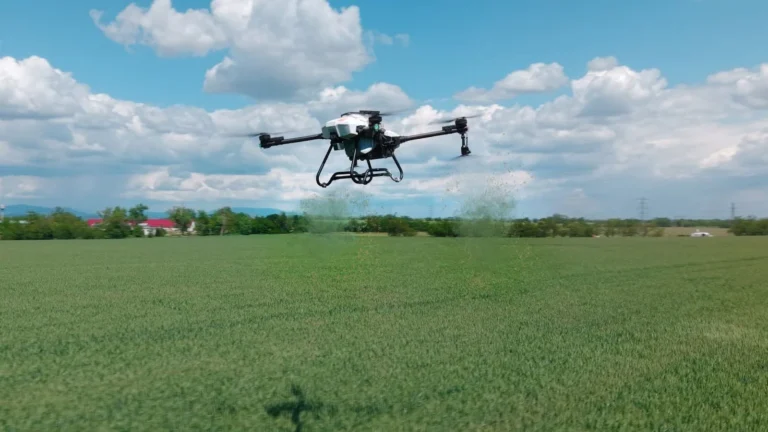Surprising results of wheat treatment using the L30 V2 spraying drone
The L30 V2 spraying drone has once again delivered outstanding performance – this time, ABZ Innovation’s own 30-Liter spraying drone was deployed at one of MATE’s (Tangazdaság Nonprofit Ltd.) experimental fields in Józsefmajor.

The objective of the field experiment
The experiment was carried out through a partnership between MATE and ABZ Drone Ltd., with the primary aim of exploring whether the combined application of MicroVital Avanti and humic acid – sprayed using the L30 V2 spraying drone – could meaningfully enhance wheat yields under these challenging and drought-stricken weather conditions.
Experiment design
Location
The field trial has been conducted near Hatvan (northeast of Budapest, about 60–70 km away), at the Experimental Farm in Józsefmajor.
Treatment
Wheat was treated at the flowering growth stage using the L30 V2 spraying drone. All other treatments were the same for both areas.
| Field size | Treatment | Dosage |
|---|---|---|
| 24 ha | Avanti + humic acid | 2 L/ha + 1 L/ha |
| 3 ha | Control (no treatment) | — |
Table 1. Presents the basic data of the applied treatments along with their dosages.
Operation, flight parameters:
The L30 V2 (ABZ Innovation) spraying drone was deployed by trained pilot Gábor Simon (ABZ Drone).
| Parameter | Specifications |
|---|---|
| Flight altitude | maximum 3 meters above the vegetation |
| Spray volume | 20 L/ha |
| Speed | 7 m/s |
| Base Station | RTK Reach RS2 |
Table 2. Presents the flight parameters of the experiment
Note: RTK Reach RS2 ensures that the drone follows the pre-programmed flight plan with centimeter (RTK) -level accuracy.
Pilot: Gábor Simon, ABZ Drone Ltd.
Results
As Dr. István Balla (R&D Director of MATE) highlighted, the experimental area was unfortunately heavily affected by drought, as it was located on one of the highest parts of the field.
Following the treatments, several rounds of plant sampling were carried out; however, no significant differences in color, plant height, or other phenological parameters were observed between the treated and control plots. Nonetheless, yield measurements revealed clear, quantifiable differences between the two plots (Table 3.).
| Areal type | Area (ha) | Yield |
|---|---|---|
| Treated | 24 ha | 4.49 t/ha |
| Control | 3 ha | 3.69 t/ha |
Table 3. Presents the yield measurements of treated and control wheat plots
Considering the results, this area generally produced lower yields than our plots located at lower elevations, most likely due to the significant role of water availability.
Conclusion
During periods of water scarcity, targeted applications—particularly at flowering, a critical phenological stage for determining yield—can provide significant support through foliar fertilization. This treatment led to an increase of 0.8 t/ha, generating an additional revenue of several tens of thousands of forints per hectare.
Foliar fertilization during flowering—a critical growth stage—is increasingly constrained by vegetation height, limiting the use of conventional tractors and highlighting the strategic value of drones. Drones facilitate precise, efficient, and non-invasive application above the crop, eliminating trampling damage. The role of drones in modern agriculture has become increasingly important, as progressively extreme weather conditions are narrowing the time window in which treatments can be applied both efficiently and timely.


